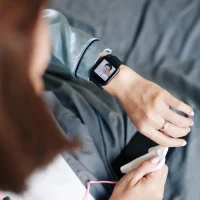A new risk prediction tool – COVID-19 Acuity Score (CoVA) – can help clinicians with screening outpatients to predict adverse outcomes related to COVID-19 infection, says a new study (Sun et al. 2020).
You might also like:AI Tool Helps to Reduce COVID-19 Mortality
"While several COVID-19 risk prediction models have been proposed for the inpatient setting, CoVA fills an unmet need for a prospectively validated risk score designed for outpatient screening and could easily be deployed before future COVID-19 surges," the study points out.
CoVA, developed by researchers from Harvard and Massachusetts General Hospital (MGH), can predict seven-day prognosis: hospitalisation, critical illness (ICU or ventilation), or death. CoVA assigns acuity levels based on 30 predictors including demographics, vital signs, radiology report, medical history and COVID-19 status.
The top five predictors, as shown in this study, were age, diastolic blood pressure, blood oxygen saturation, COVID-19 testing status and respiratory rate. Other pre-existing medical conditions such as cancer and pancreatitis also increased risk for adverse outcomes.
In previous studies, hypertension and diabetes mellitus were identified as risk predictors but this was not the case with the CoVA model, according to the Harvard-MGH team.
The researchers also noted that CoVA could be incorporated into electronic health record (EHR) systems. As such, CoVA could lessen the burden of busy frontline clinicians who can use the tool to expedite triaging and planning follow-up care for patients presenting for COVID-19 screening.
For this study, the researchers extracted EHR data from patients seen in the MGH's Emergency Department (ED) and Respiratory Illness Clinics (RICs) between 7 March and 14 May 2020. Patients were divided into development (n = 9,381, March 7-May 2) and prospective (n = 2,205, May 3-14) cohorts. Outcomes were hospitalisation, critical illness (ICU or ventilation), or death within seven days. Calibration was assessed using the expected-to-observed event ratio (E/O). Discrimination was assessed by area under the receiver operating curve (AUC).
Based on the results, 26.1%, 6.3%, and 0.5% of patients in the prospective cohort experienced hospitalisation, critical illness, or death, respectively. Meanwhile, the CoVA model showed excellent performance in prospective validation for hospitalisation (E/O: 1.01, AUC: 0.76); for critical illness (E/O 1.03, AUC: 0.79); and for death (E/O: 1.63, AUC=0.93).
To ensure generalisability of results, the authors said they used a large development cohort of patients and trained the model using a rigorous approach. "We ensured clinical interpretability by utilising a linear model with positivity constraints on predictors expected to increase risk," the authors explained.
With regard to the CoVA model's large-scale prospective
validation, this provided an assessment of model generalisability with minimal
(or reduced) bias, the research team added.
Image credit: Sun et al. 2020










